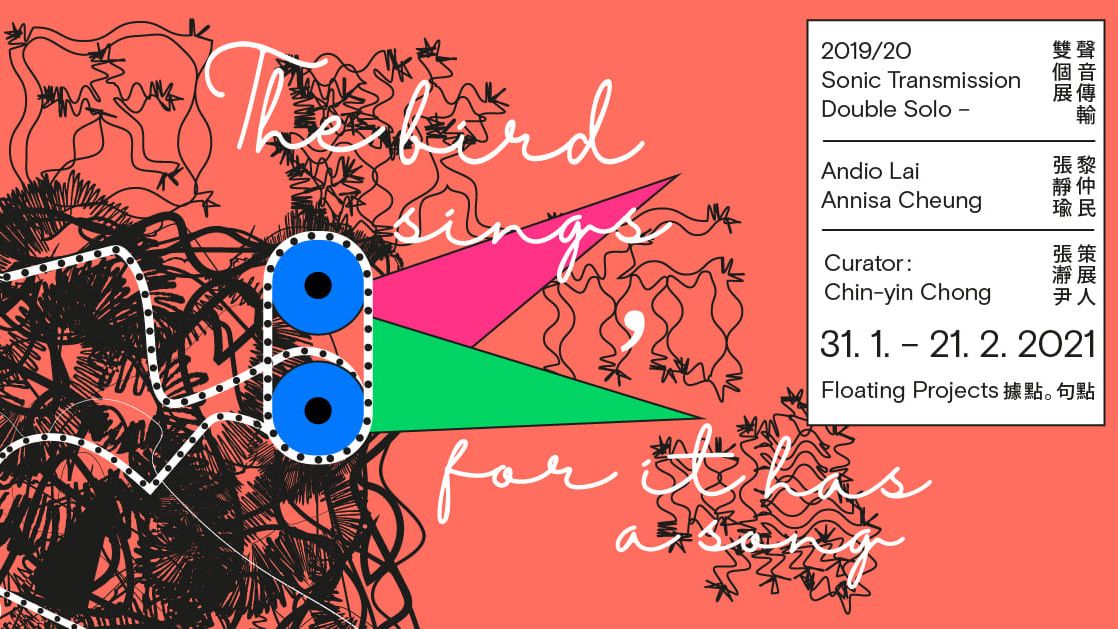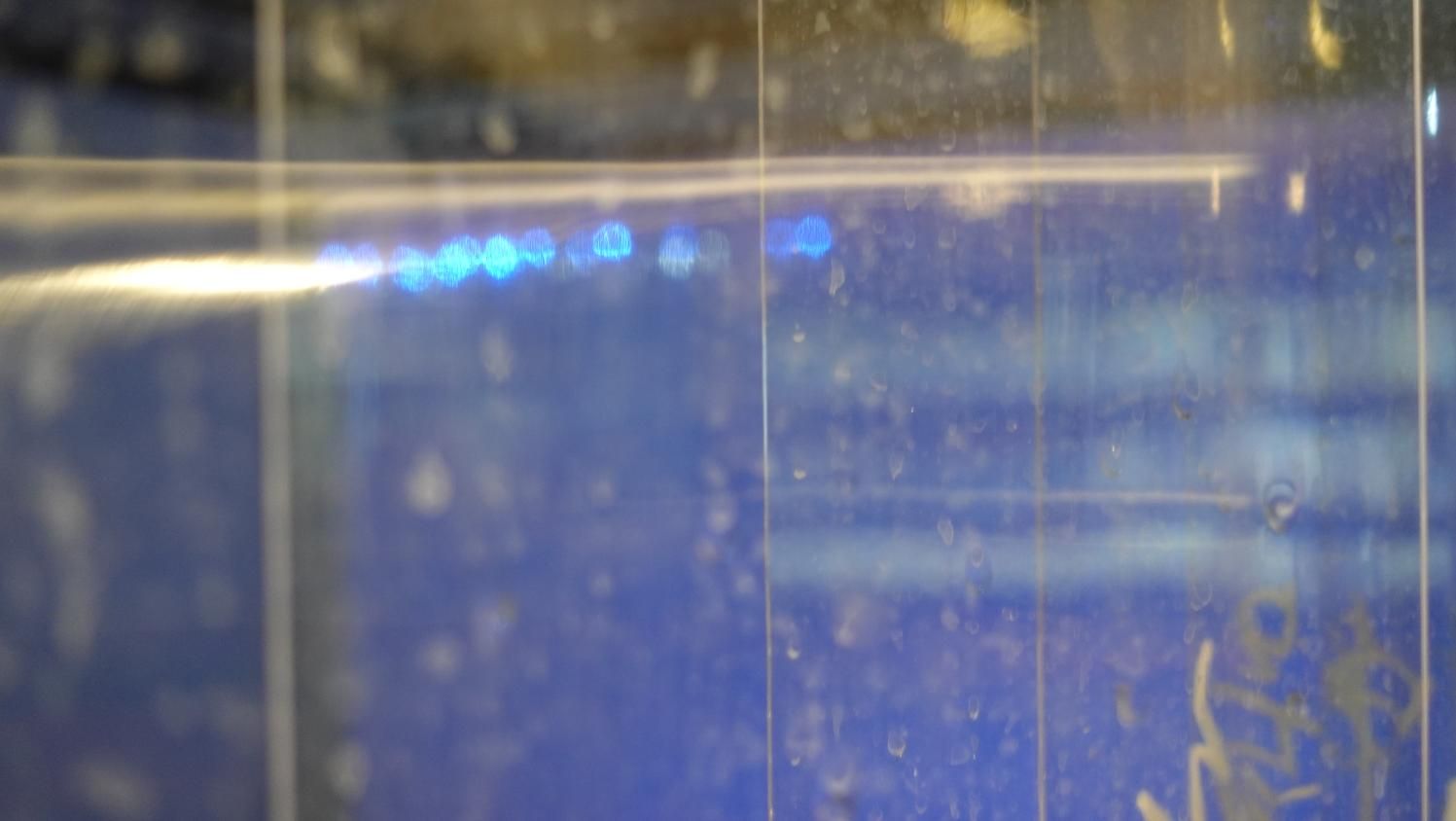Sonic Transmission 2020: Hong Kong
Date: 31.01- 21.02.2021
Time: 14:00 - 20:00
Location: Floating Projects
Artists: Andio Lai, Annisa Cheung
The bird sings, for it has a song (Double Solo Exhibition)
Sound is ubiquitous. To produce meaning through/with sound is another issue. To attempt this is to engage with sound’s complexity, and its diversity. Under the banner of sound art, and out of the variety of topics that sound studies have explored, artists have forged many divergent and individualistic paths, while sound art’s definition continues to be held in suspension. In the beautiful words of Joan Walsh Anglund: “A bird does not sing because he has an answer. He sings because he has a song.” Similarly, the sound artists’ forking paths are forged not in service of answers but arise out of desires. It is the faith and tenacity of the explorers that allows new sounds to be found and heard. This duo solo exhibition presents the different research directions and observations in sound by Andio Lai and Annisa Cheung – the artists selected for Contemporary Musiking Hong Kong’s Sonic Transmission Artist Exchange Program 2019/20.
Andio Lai has long been interested in media technology and its history. He explores the form and function of sound emitting objects. This exploration is further enriched by concepts in interactive design, as well as discussions pertaining to the relationship between musical instrument, sound, play, and human agents. From analog to digital, from schematic diagrams to interactive interface – this exhibition marks Lai’s attempt in re-organizing these diverse concepts, returning momentarily to the idea of a “prototype,” which is in turn enriched by mythologies across cultures. The mysterious and unknowable qualities of these myths are fascinating for Lai, and he draws a parallel between myths, and sound and musical instruments – for him, they are similarly cross-cultural, a feature that Lai is attracted to and is curious about. His presentation is organized into three sub-sections, each is grounded in a unique mythology-material coupling that represents the artist’s imagination towards the instrument and materials during the process of making and research: Medusa by way of “knobs”; “buttons” in conversation the wheels that are lined with eyes in Ezekiel’s vision of God; and “form” as a metaphor for the Sigurd’s reforged Gram. Could the form and sound of traditional musical instruments, with which we have become only too familiar, turned out differently in an alternate, speculative future? And does an “ideal musical instrument” exist? The three works on display here engage simultaneously with the formal, the auditory, and the interactive. Aided by documents and sketches, the sound objects in this exhibition invite members of the audience to complete the feedback loop through acts of free play.
While Annisa Cheung more often operates as a performer and composer, this exhibition marks Cheung’s experiments in sound-visualization, as a way to make vivid the experience of listening. Cheung’s point of departure is the relationships between music and human emotion: emotion as expressed in lived experiences, memories, and tactility of the body – hearing at the crossroad of vibration and senses. Sound has an effect on the human brain – on the mind, and on our emotions. It can cause emotional contagion. These quotidian observations found their crystallization in the idea of the weather, which Cheung deploys as a theme in this exhibition. Here, through images, sounds, and music, Cheung seeks to test the so-called “affective moment”: the split second when a shift of mood – prompted by atmospheric shifts or changes in frequency – had just occurred. Sound penetrates the translucent curtain that is our senses, to trigger emotions and memories. Cheung’s presentation will feature installations as well as original musical compositions. Members of the audience are prompted to listen to the musical compositions on-site and elsewhere, allowing the music to color the everyday as an “atmosphere”. The music is also likened to an “invisible personal diary” that the artist shared with its audience, awaiting to be accessed anew by the audience someday.
We are always learning to recognize our surroundings and specific things that we come into contact with through sound, perceiving, locating and constructing the physical and virtual world around us – whether it is through hearing or listening, passive or active experiences. Sound is widely used under many circumstances, but it is still dense in puzzles. Just as we investigate the singing bird out of our own curiosity, the goal of scientific research is not to eliminate one’s imagination towards the mysterious. It is sensibility and curiosity that will propel us to move forward. The bird is still belling out its song. Through the diverse creations of artists, and aided by developments in technology, we have reasons to be optimistic about the many possibilities of sound art in various fields.
Curator: Chin-yin Chong



